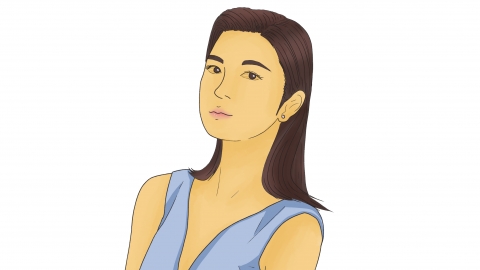What are the early symptoms of bile duct cancer?
Generally, cholangiocarcinoma is a malignant tumor occurring in the bile duct system. Its early symptoms mainly include jaundice, dull abdominal pain, indigestion, darkened urine, and pale stools. A detailed analysis is as follows:

1. Jaundice: Jaundice is a common early symptom of cholangiocarcinoma, manifesting as yellowing of the skin and whites of the eyes. This occurs when the tumor blocks the bile duct, preventing normal bile drainage. As a result, bilirubin from bile enters the bloodstream and spreads throughout the body via circulation, causing yellow discoloration of the skin and mucous membranes. The jaundice typically progresses gradually and worsens over time.
2. Dull abdominal pain: Some patients experience mild, intermittent dull pain or bloating in the upper right abdomen during the early stages. This discomfort is often mistaken for common gastrointestinal upset due to its mild nature. As the disease progresses, the frequency and intensity of the pain may increase.
3. Indigestion: Due to tumor blockage of the bile duct, bile cannot flow properly into the gastrointestinal tract to aid digestion. Patients may therefore develop symptoms of indigestion, such as post-meal bloating, nausea, and heightened sensitivity to greasy foods. After consuming fatty foods, they may experience diarrhea or sticky stools. Over time, this can lead to slight weight loss.
4. Darkened urine: Affected by abnormal bilirubin metabolism, patients' urine gradually becomes darker—from light yellow to deep yellow—and in severe cases may resemble strong tea. This occurs because excess bilirubin in the blood is excreted through the kidneys, increasing bilirubin levels in the urine and altering its color.
5. Pale stools: Normally, bile pigments give feces their characteristic brownish-yellow color. When the bile duct is blocked by a tumor, bile pigments cannot enter the intestines, leading to progressively lighter stool color—ranging from pale yellow to grayish-white or even clay-colored. This symptom commonly appears alongside jaundice.
Patients experiencing the above symptoms should seek timely medical evaluation at a hospital to confirm diagnosis and actively cooperate with treatment. In daily life, it is important to maintain a light diet, avoid excessive intake of high-fat and high-cholesterol foods, follow a regular作息 (sleep-wake) schedule, and maintain a positive mental state.






